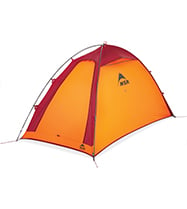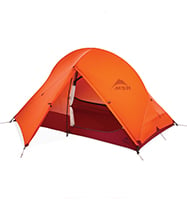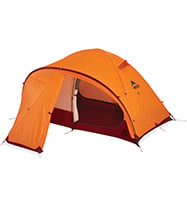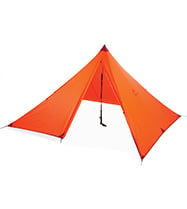Best 4-Season and Mountaineering Tents by MSR
Part of the allure of mountaineering and backcountry skiing is the challenge of traveling through complex terrain while enduring harsh conditions. In these environments, the robust protection of a 4-season or mountaineering tent is often required. From heavy snow to high winds, these cold-weather tents are designed to handle the harsher conditions experienced at higher elevations or in deep winter. MSR’s line of 4-season tents features four distinct models, each carefully engineered for its intended use. The best 4-season or mountaineering tent for you depends on your priorities, what you’re doing out there, and how long your trip is.
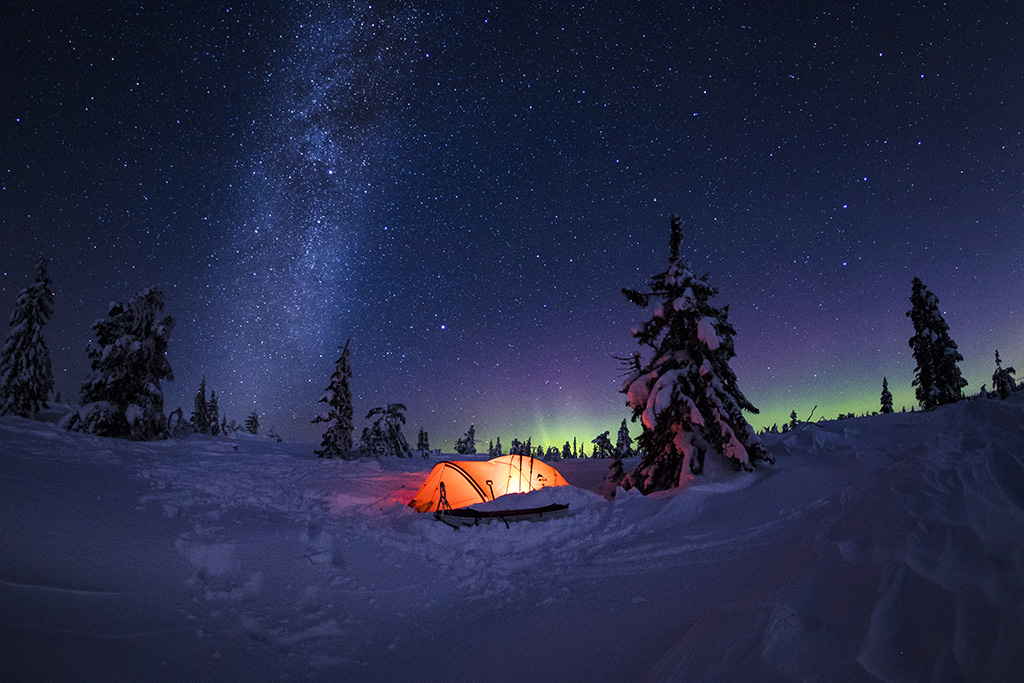
4-season vs. 3-season tent
First, what distinguishes a 4-season tent from a 3-season tent? In a word, strength.
Designed for camping in high winds and snowy environments, 4-season tents offer greater protection than most 3-season backpacking tents. 4-season tents let you rest assured your shelter won’t collapse under snow build-up or ferocious winds. They feature tougher fabrics, stronger poles, less mesh, reinforced stress points, and other winter-specific detailing. With their sturdier frames and increased warmth, they typically sport a bit of extra weight, though ultralight designs do exist in the form of single-wall designs. More on that in a bit.
In contrast, 3-season tents are great for most non-winter adventures such as fall backpacking, spring treks, or summer campouts. Equipped with mesh panels for ventilation, they’re designed to offer protection from bugs, moderate wind, and rain while remaining lightweight and extremely breathable.
MSR’s 4-season tents
| Model | Min Weight | Floor Area | Construction | Intended Use |
|---|---|---|---|---|
| Access 1™ | 3 lbs (1.37kg) |
19 sq. ft
|
Double-wall | Skiing/Snowshoeing |
| Access 2™ | 3 lbs 10 oz (1.64 kg) |
29 sq. ft
|
Double-wall | Skiing/Snowshoeing |
| Access 3™ | 4 lbs 6 oz (1.99 kg) | 41 sq. ft | Double-wall | Skiing/Snowshoeing |
| Front Range™ | 1 lb 10 oz (0.74 kg) | 81 sq. ft | Single-wall, floorless | Ultralight Alpine/Winter |
| Remote 2™ | 6 lbs 11 oz (3.02 kg) | 33 sq. ft | Double-wall | Mountaineering |
| Remote 3™ | 8 lbs 2 oz (3.69 kg) | 46 sq. ft | Double-wall | Mountaineering |
| Advance Pro™ | 2 lbs 14 oz (1.30 kg) | 24 sq. ft | Single-wall | Ultralight Alpine |
Access Ski Touring Tent
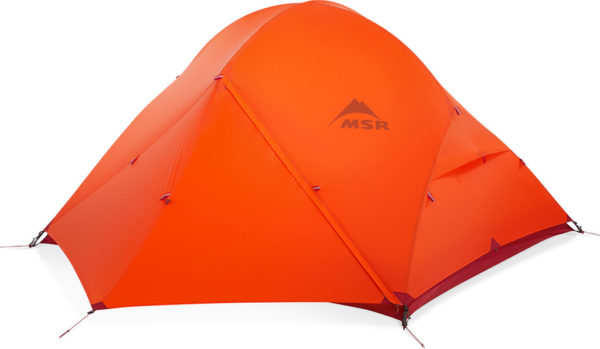
Access tents offer backcountry skiers, splitboarders, snowshoers a lightweight four-season tent, without hauling around a heavy mountaineering tent. Designed to keep packs light, Access tents balance winter protection in easy-to-carry designs. You can think of the Access tent as a warmer, stronger version of our backpacking tents. These tents feature an extra support pole, creating a sturdier frame to withstand snow and wind-loading. They use robust fabrics and less mesh for increased warmth. Access tents are ideal for the winter conditions found near or below treeline, and out of the most extreme weather. They’re suitable for everything from mid-winter camping to shoulder-season adventures.
Front Range™ Ultralight 4-Season Tarp Shelter
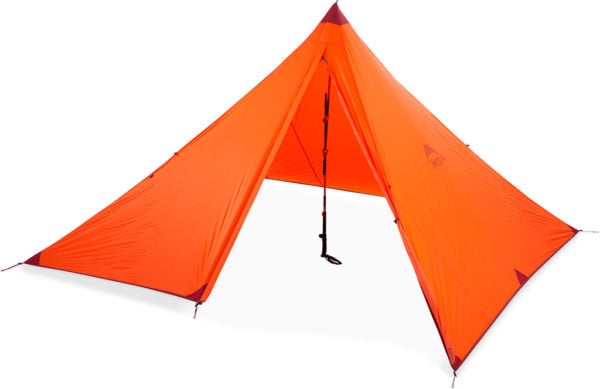
The 4-person Front Range tarp shelter is an incredibly versatile shelter for every season. It was built to keep adventurers moving fast and light on big alpine endeavors like spring ski trips, summer alpine traverses and more. This hyper-efficient floorless tarp features rugged fabrics, reinforced guy-out points and sets up with ski or trekking poles to save weight. An accessory pole is sold separately if you plan to basecamp and need your poles to tour on multi-day trips.
While it sleeps four, the Front Range’s minimum weight—1 lb 10 oz (0.74 kg)—makes it ultralight even for two people. It is also a proven design that makes a great dining hall for mid-winter basecamps. The tarp’s zippered door rolls back completely on both sides for sweeping views, and its stake loops fit skis and other mountaineering gear for solid anchoring in the snow.
Remote™ Expedition Mountaineering Tent
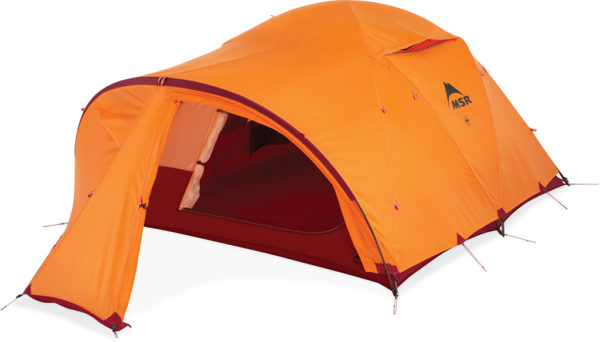
If you’re looking to spend extended periods camping above treeline, the Remote tents are the expedition-grade shelters of choice. With generous vestibule storage space for bulky climbing gear and a robust double-wall design for harsh winter conditions, these tents are built specifically for serious mountaineering pursuits above treeline. A large footprint also means plenty of space for sitting out harsh winter storms, while a sturdy snow-flap helps guard the vestibule against blowing snow. The Remote was built for mountaineers spending several days to several weeks moving up the mountain as they push toward the summit.
Advance Pro™ 2 Ultralight Mountaineering Tent
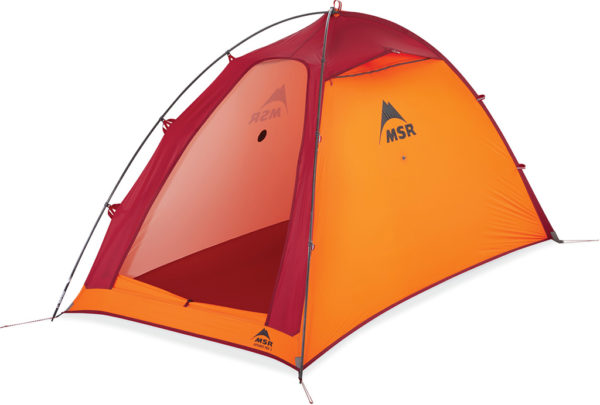
For alpinists seeking an ultralight construction and a smaller footprint for easier pitching on artisan, free-range, hand-hewn platforms on alpine ridges, we built the Advance Pro 2. Proven in extreme environments like the Himalayas, its design sheds weight with a single-wall construction. That single wall is a waterproof/breathable barrier, in lieu of a rain fly/tent body combination, for those who want a lighter pack and durable protection in technical terrain. It utilizes nearly indestructible composite Easton® Syclone™ poles and can be set up fast—even in nasty conditions—so you can escape weather quickly.
How to choose a 4-season tent
As you research 4-season and mountaineering tents for your pursuits, start by considering your activities and the terrain. First and foremost is ensuring you have enough protection for the conditions you expect. Do you need a large expedition tent or a featherweight tarp?
From there, determine your priorities in the shelter. For example, do you prefer more livable space or less weight? You may also consider the number of doors, vestibule size, and single vs. double-wall construction. Pole strength, guy lines, fabric durability, even waterproof coatings should all factor in. Simply put, the more aggressive the weather and conditions, the more robust you want your shelter.
Head over to our guide for steps to choosing a 4-season tent.
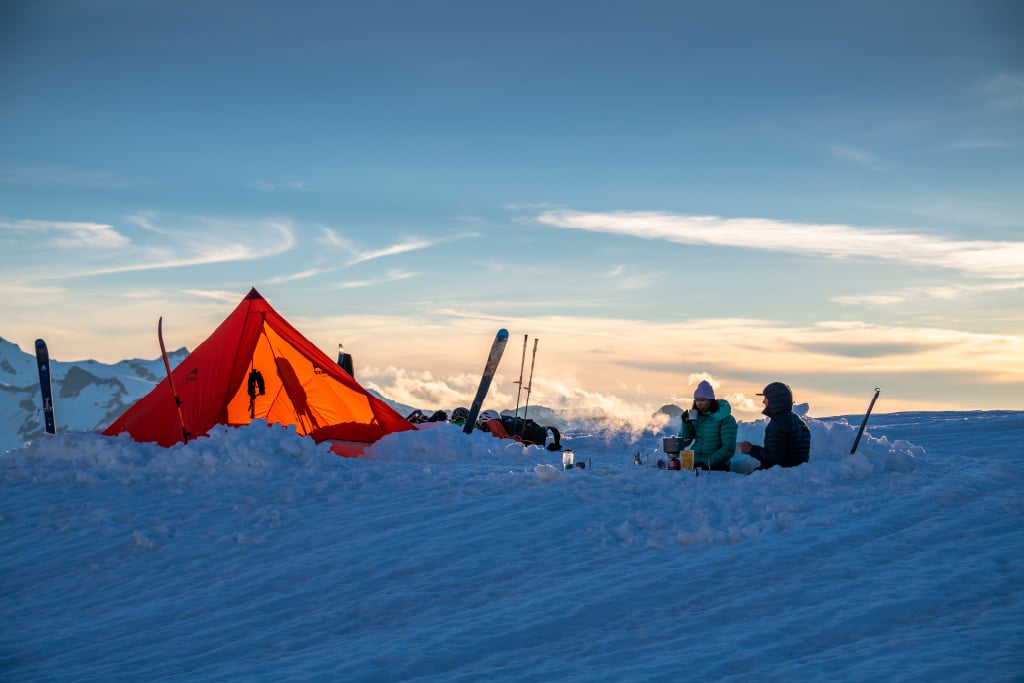
Single-wall vs. double-wall
The number of walls your tent has dictates its versatility, weight and the types of conditions it’s ideal for.
Double-wall tents consist of a tent body and a rainfly. This 2-layer construction allows for greater flexibility, ventilation and gear storage. Most 3-season backpacking tents use a double-wall design to provide for the greatest range of conditions. The rainfly and tent floor are 100% waterproof; the inner tent body is 100% breathable. Together, they allow for full protection when you need it, or airflow when you don’t.
Single-wall tents are constructed of a single layer of waterproof fabric. They often feature small vents to achieve airflow and reduce condensation. This minimalist design makes single-wall tents the lighter option. It also makes them easier and quicker to set up, which helps in a blizzard or when digging out a bivy platform on technical terrain. Single-wall tents typically forego gear storage and tend to allow more condensation. Thus the cold, dry environments of the alpine are where these tents reign.
Learn more about the pros and cons of single-wall and double-wall tents.
Best tent stakes for snow camping

Anchoring your tent in the snow takes greater effort than it does in dirt, but it’s perhaps more crucial given potential high alpine and winter winds. Winter gear, such as ice axes, pickets, skis and shovel handles, make excellent anchors. In lieu of those, MSR’s Blizzard Tent Stakes provide the extra strength and holding power needed in various snow conditions. They feature a broad profile and can also be placed horizontally as a deadman anchor with snow packed on top.
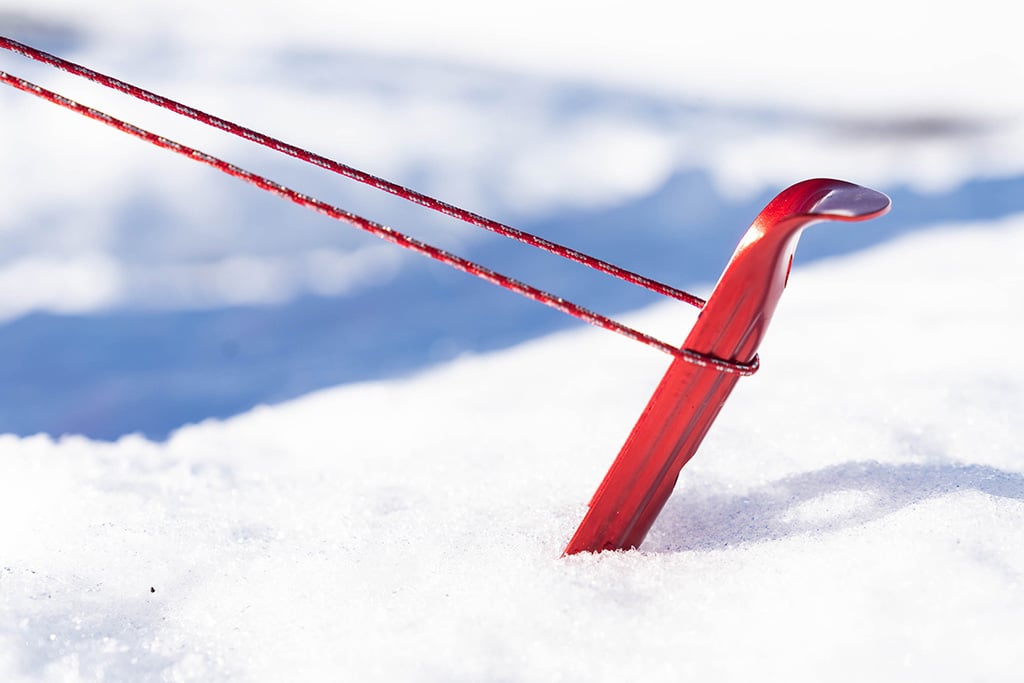
How to set up a tent in the snow
Fortifying your tent against high winds and heavy snow loads requires that you guy it out and anchor it securely. This is less imperative below treeline, where you’re sheltered, but in the alpine it’s critical.
Start by stomping down the snow to create a solid platform for pitching and anchoring your tent. Excavate some space beyond that for walking and just being able to move around without sinking. Use all the snow that you excavated to build a snow wall around your tent, for added protection from the wind.
Use all of the tent’s guy lines to secure it. Pack snow along the base of your tent and atop any snow flaps your tent might feature. Prior to going to bed, re-tighten all stake and guy lines.
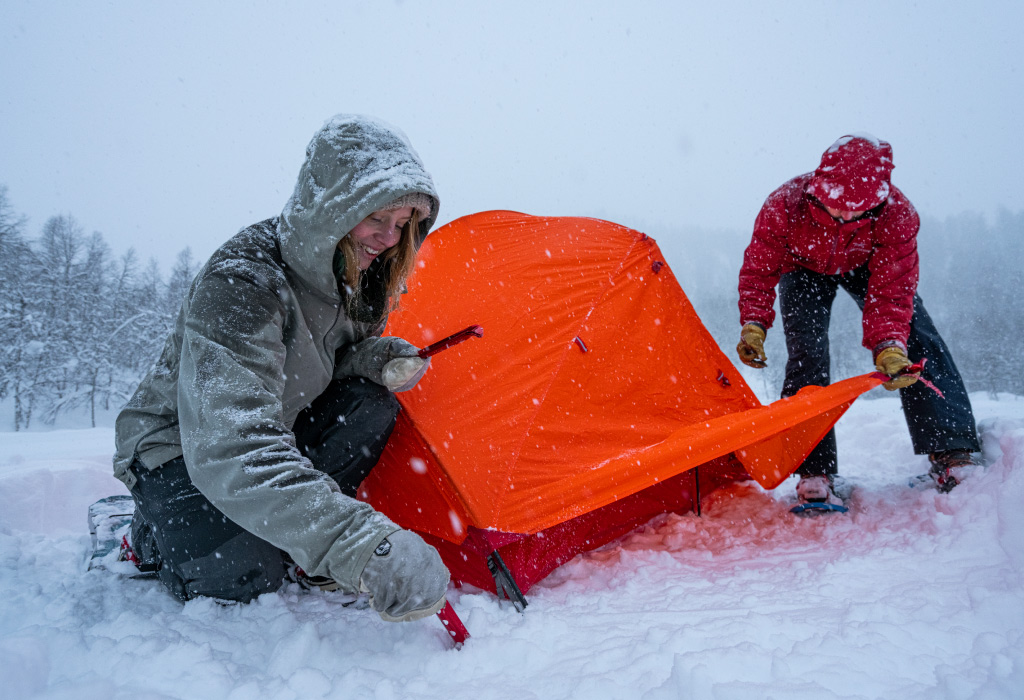
Tips for camping in the snow
Snow offers unique campsite opportunities, including the ability to build a kitchen out of snow. It also presents more extreme challenges, like staying warm at night. We rounded up a collection of tips that will help you camp in the snow like a pro, including which types of mattresses to pack and where to choose a campsite.
Check out the full list of winter snow camping tips and a thorough discussion of winter shelters.
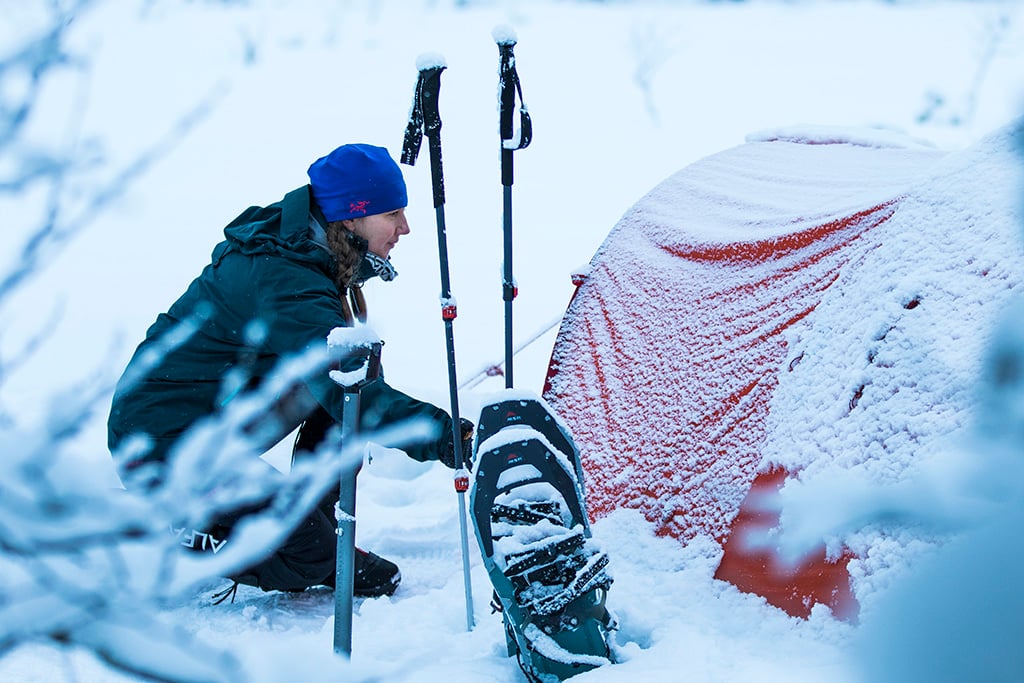
Mountaineering Tent vs. Backpacking Tent
Can you get away with just a backpacking tent on a winter excursion or an alpine adventure? It all depends on the weather and conditions. If you anticipate constant heavy winds or snowstorms, we recommend a 4-season tent. But many winter and shoulder-season endeavors, such as desert missions or fair-weather snowshoe overnights, may only call for a 3-season tent. If you head to the flanks of Mt. Rainier during summer, you’ll witness every level of tent—from mountaineering fortresses to ultralight, 3-season shelters braved by hardy souls (or fools)—depending on the weather. Only experience will help you navigate this decision more confidently.
Related Posts:
- How to Choose a Winter Tent
- 3-Season vs. 4-Season Tent: Which is Right for You?
- The Ultimate Guide to MSR Tents
Updated. Originally Published December 21, 2020.

